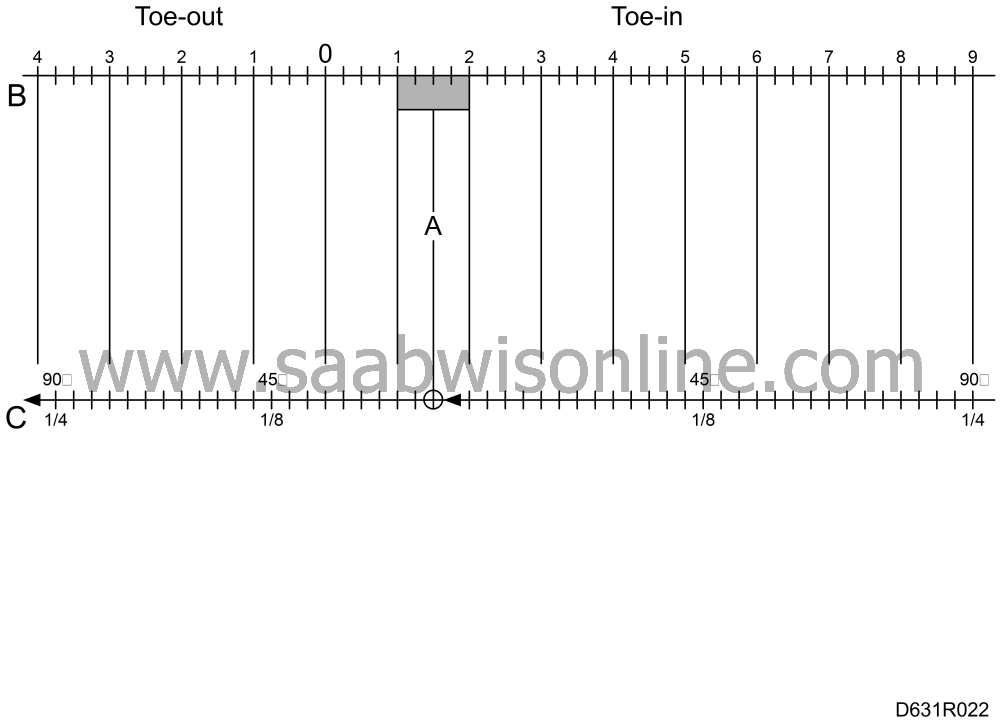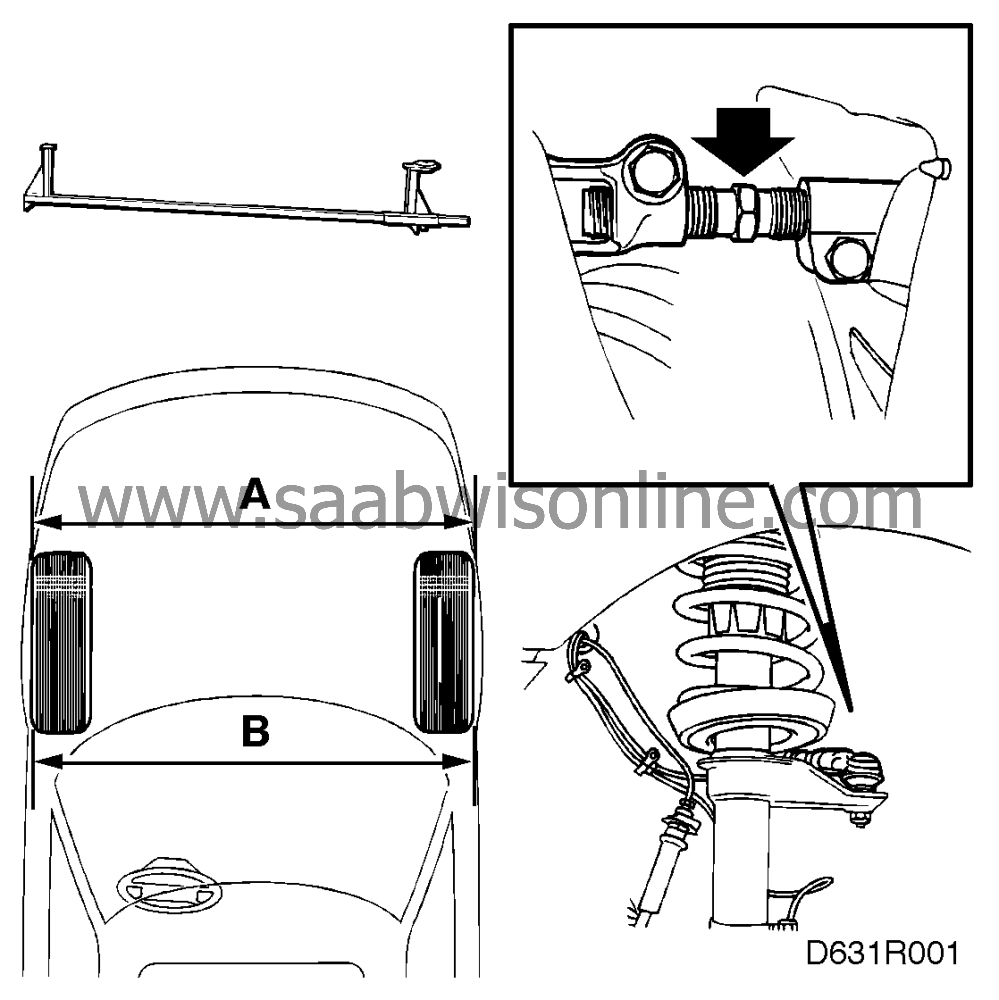Toe-in
| Toe-in |
| Adjustment using a tracking gauge |
| 1. |
With the car on a perfectly level surface, roll it straight ahead and allow it to come to a stop by itself.
|
|
| 2. |
Using the tracking gauge, measure dimension A between the rims at axle height. Mark the measuring points with chalk. Roll the car forward until the chalk marks are at axle height again and then measure dimension B. Using this method, the tracking gauge remains in the same position on the floor for both measurements. This ensures that any unevenness in the floor surface will not affect the measurements.
|
|
| 3. |
If adjustment is necessary, do this by adjusting the length of the track rod on both sides of the car. Slacken the locking bolts on the track rod and track-rod end.
|
|
| 4. |
Turn the adjusting screw with a spanner to the right or left and try different settings according to the table until the right toe-in is obtained. Tighten the locking bolts, using a torque wrench.
Tightening torque: 22 Nm (16.2 lbf ft).
|
||||||||||
| 5. |
Check the length of the track rod.
|
|
| Toe-in adjustment table |

Use the table as shown in the following example:
| 1. |
Fix the steering wheel in the straight-ahead position.
|
|
| 2. |
Assume the tracking gauge gives a reading of 0.5º toe-out.
|
|
| 3. |
Follow the table's upper line to "0.5º toe-out". An imaginary line running down from "0.5º toe-out" shows that the adjusting screw should be screwed out barely 1/8 turn on each side.
Tightening torque, locking bolt: 22 Nm (16.2 lbf ft). |
|



